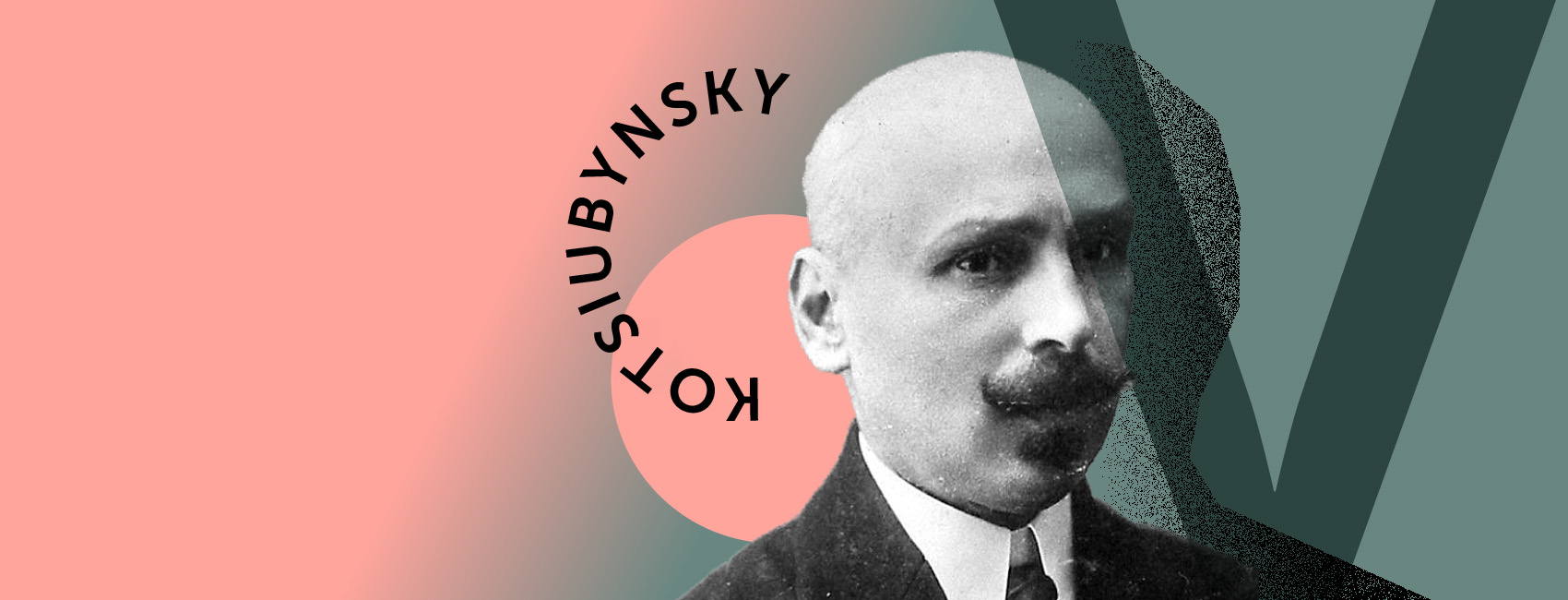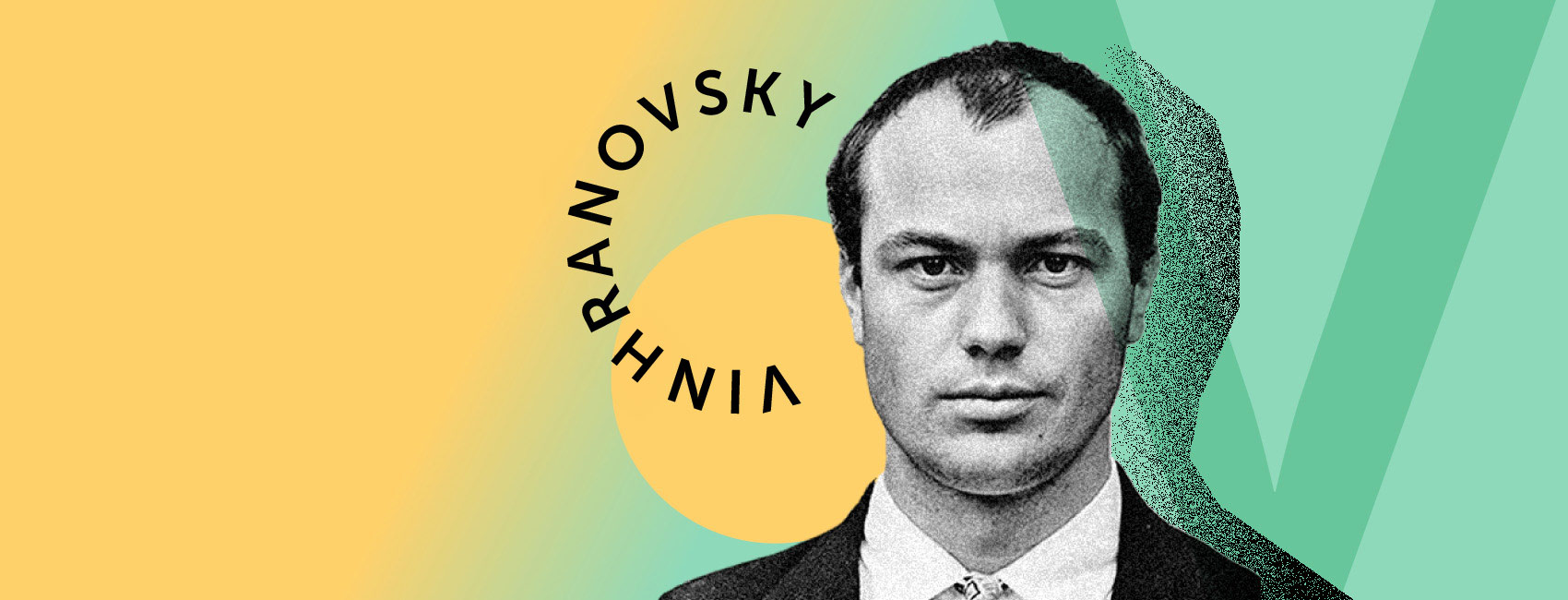* ESC - close the search window
modernism
The steamship that carried Valerian Pidmohylnyi
15.03.2024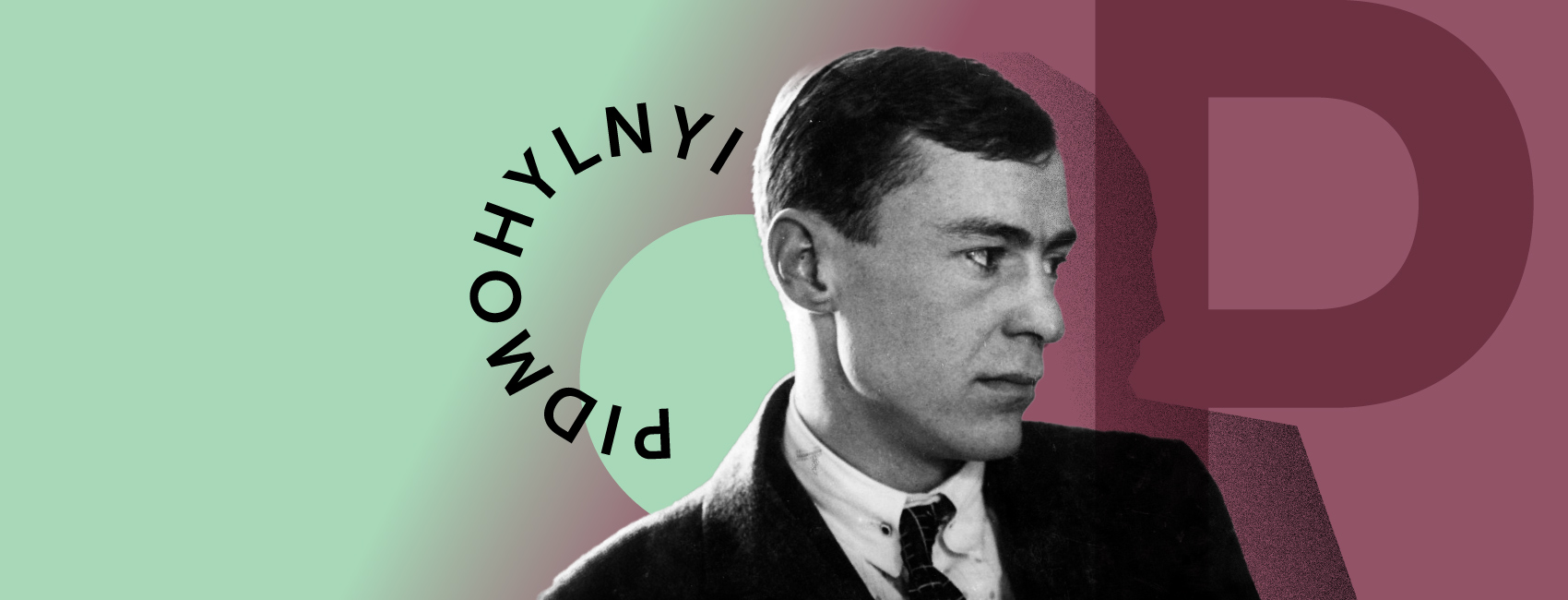
Ukrainian modernism of the 20th century was an answer to the unfolding literature crisis: Old writing that leaned towards an ethnographic description of villages and internal collisions could no longer satisfy an audience that rushed to the cities. In the 2020s, Ukrainians read their history anew through modernist texts that do not feel distant in time, have no expiration dates, and are accessible without dictionaries or footnotes. Times change, but the context stays the same. This is the reason why “Misto” (“The City”) by Valerian Pidmohylnyi received a new life and a new audience.
Biography Based on the NKVD Interrogation

Valerian Pidmohylnyi’s short biography
Unlike other modernist writers, Valerian Pidmohylnyi’s life story is unsuitable for creating a biography or producing a spy movie. He did not write denunciations, nor did he participate in public discussions. Still, it doesn’t mean he was invisible in the Ukrainian literature landscape of the 1920s. Pidmohylnyi shares laconic and comprehensive information about himself during NKVD interrogations at the end of 1934. Where can one find his alternative true biography when all we have are the materials of interrogations and a few mentions in forewords by his contemporaries? Where can one find his real biography if almost all of his letters were destroyed?
There is little to gather from his whole, very limited biography. He was born in 1901 in Katerynoslav Governorate (now Dnipro oblast in Ukraine, very close to the current frontline) to a modest family that still had the means to pay for French lessons from the future Honoré de Balzac, Guy de Maupassant, and translator Denis Diderot. Pidmohylnyi fully identifies himself with literature from his teenage years: first through adventure short stories, later through more serious texts. That’s why his first collection of stories published in Katerynoslav (now Dnipro) had an ambitious title, “Твори. Том 1” (“Works. Volume 1”). He was barely 19 years old.
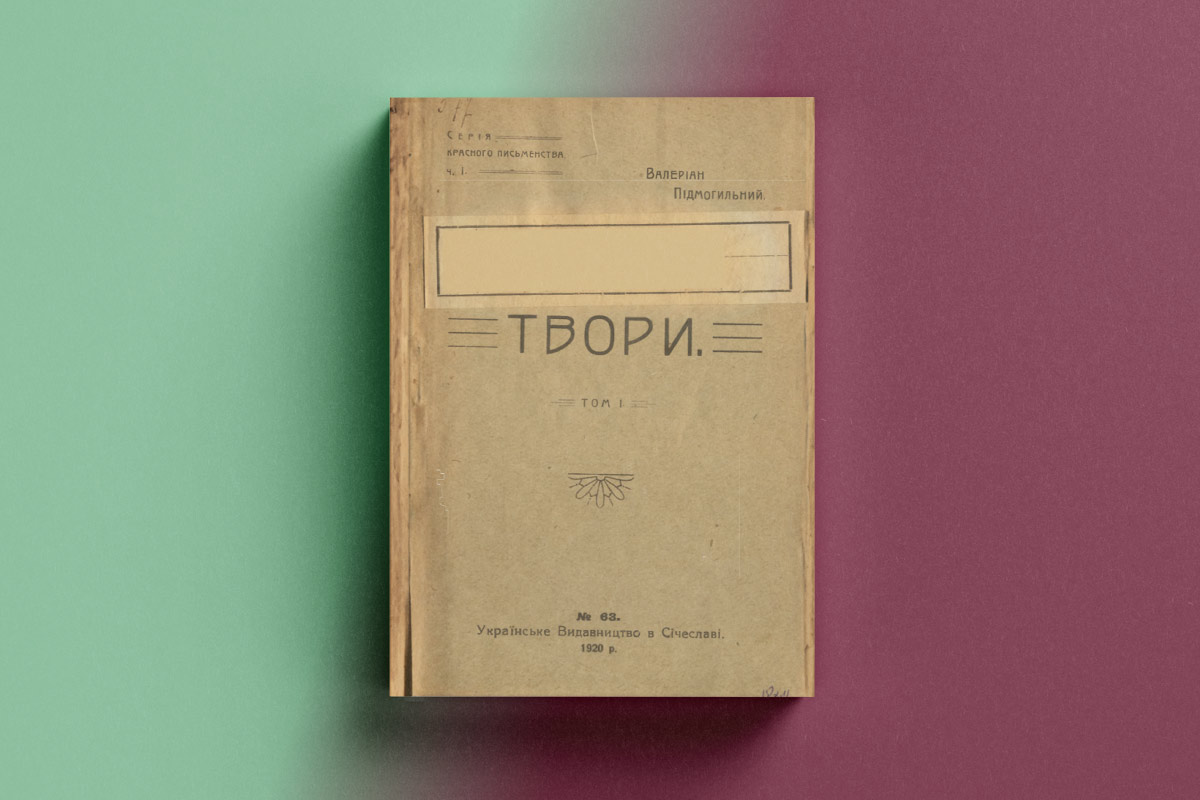
Works by Valerian Pidmohylnyi (Ukrainian edition, 1920)
Early Pidmohylnyi’s texts are breathing with literary descriptions of the Ukrainian steppe. It’s the place his future characters will dream of returning to, but the city will not let them go. All of Pidmohylnyi’s writing can be described as the coming of age of the man and the writer.
RELATED: ‘Whoever liberates themselves, shall be free.’ Lesya Ukrainka’s life and legacy
The Literature of Four Walls
Despite Pidmohylnyi’s focus on creating a new kind of literature (intellectual prose), he does not break ties with realism from his very first texts through his last ones. Almost every male or female character carefully investigates new spaces through descriptions; almost always, it is a description of a room as a living space. It feels like Pidmohylnyi’s heroes live according to the motto: “Show me your room, and I will tell you who you are.”
A year after Pidmohylnyi’s debut, he moved to the town of Vorzel, next to Kyiv, where he started work as a teacher and an interpreter. This allowed him to earn money for a living since, all of a sudden, he faced problems with the publication of his texts. The diaspora periodical “New Ukraine,” edited by writers Mykyta Shapovalov and Volodymyr Vynnychenko, rescued him. Obviously, being published by figures considered by the Soviet Union as “anti-proletarian” and “counterrevolutionary” would later cause problems for Pidmohylnyi.
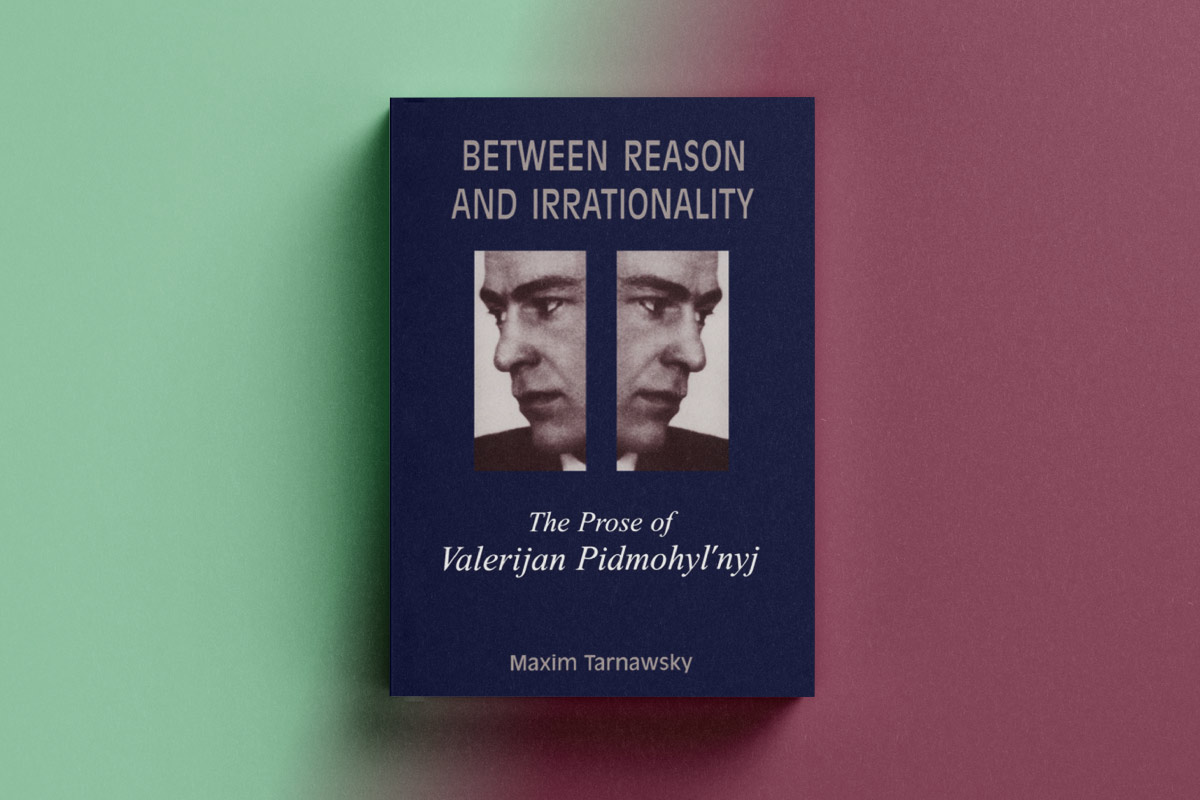
Six Best Years Before the Breakdown
In 1924, Pidmohylnyi became a leader of a literature group, “Lanka” (“The Link”), later “MARS — Maysternia Literaturnoho Slova” (“A Workshop of a Revolutionary Word”). Together with writers Hryhoriy Kosynka, Evhen Pluzhnyk, Borys Antonenko-Davydovych, and Dmytro Falkivskyi, he engaged in translations for his own printed magazine “Life and Revolution.” There, he also defended the position of expressive new-age tools as opposed to early Soviet graphomania, encouraged by official literary criticism. In the letters of denunciation, MARS is described as an organization that ignores proletarian literature. Needless to say, almost all of its members were repressed by the regime.
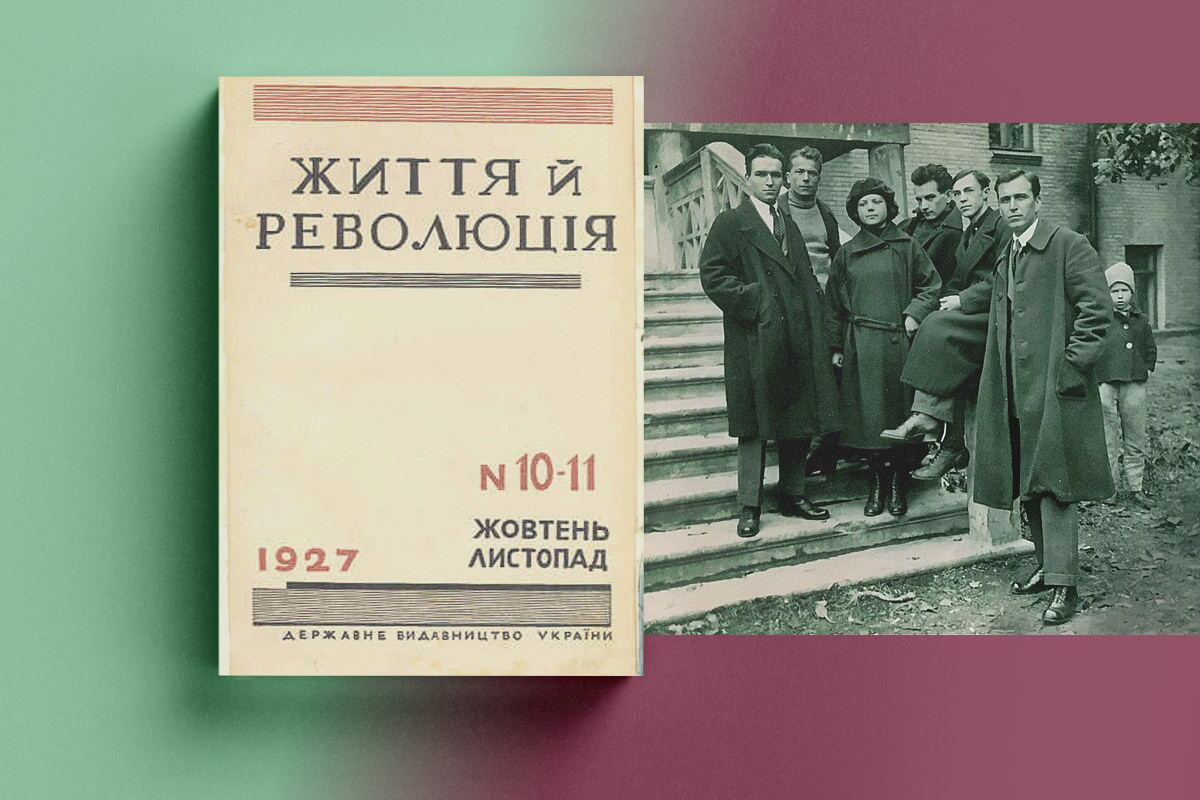
Life And Revolution (Ukrainian magazine, Oct-Nov 1927)
The period of 1924-1930 became Pidmohylnyi’s time to write himself into the story. He was occupied with editorial work, translation, and research of Ukrainian authors Ivan Nechuy-Levytsky and Maksym Rylsky. Most importantly, the power of community gave him fresh strength for writing new works. As a result, he released a new collection of stories, “The Problem of Bread,” in 1927.
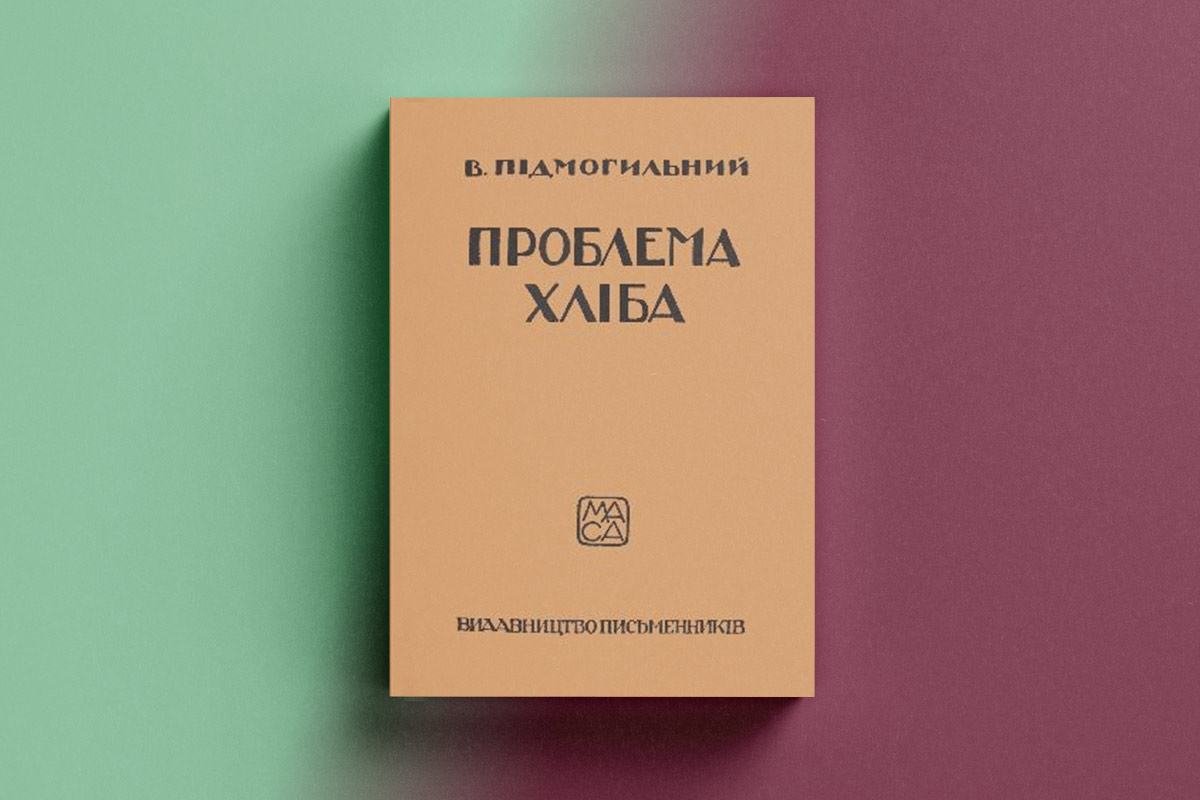
“The Problem of Bread” by Valerian Pidmohylnyi (Ukrainian edition)
The more Pidmohylnyi wrote, the more his heroes distance themselves from the steppe and moved closer to the city landscape. Pidmohylnyi always draws attention to communication routes between the village and the city. In his early short story “Vania” (“Tvory. Volume 1”), a child uses the railroad as a toy. It changes in “The Problems of Bread” and other short stories that appear later, where a train becomes something larger than a human itself. A character grows while shrinking, trying to squeeze in the train or at least jump on its roof to get to the city and later survive there.
RELATED: Ivan Bahrianyi: perfect adventure novels, perfect adventure life
Stepan Radchenko, the main character of Pidmohylny’s most famous novel “The City” (“Micто”), arrives in Kyiv on the steamship, which allows him to bid farewell to one shore (the steppe) on his way to another one (the city). At the end of the novel, it seems like a character finally settles down in the city and rents not just a room for existence but an office for a writer. Nonetheless, on an existential level, he remains on that steamship, stuck in an endless inner conflict, always unsure which shore to choose, which person to be, and which woman to stay with.
The plot of “The City” is familiar to the readers of “Bel-Ami” by Guy de Maupassant, whom, by the way, Pidmohylnyi translated as well: A young man who conquers the city and in parallel, of course, conquers women, takes from their lives everything (the best for his career and social status, in particular), breaks their heart, destroys their fates, and goes on living without any troubles. Isn’t this an eternal topic in world literature?
Unlike French or German novels of this kind, “The City” is filled with a good portion of irony and philosophical talks one can have over a glass of beer. So when you read about the formation of Stepan Radchenko’s identity as an artist and a citizen, you don’t feel like yawning and setting the book aside as far as possible, as it could have been with reading about Georges Duroy’s wandering in Paris, described in “Bel-Ami.” “The City” is not an adaptation of Maupassan or “The Clouds” (“Хмари”) by Nechuy-Levytsky (another classical novel about Kyiv). It is a story about a space that Pidmohylny finally wants to add to the discourse.
From the moment “The City” was published in 1928, it immediately caused excitement in readers and became a true sensation. People discussed it everywhere, and the text became an illustration of the state of literature and culture at that time. These descriptions were not flattering to the Soviet Regime.

The City by Valerian Pidmohylnyi (Ukrainian editions)
Outside “The City”
In 1928, together with the Ukrainian writer’s delegation, Pidmohylnyi visited Paris, Prague, Berlin, and, of course, Moscow. His impression of this trip remains unknown. Only the investigator’s questions during Pidmohylnyi’s interrogation capture some memory that this literary tour really happened. In 1929, the writer continued to work on translations. He was removed as the Editor of “Life and Revolution” and, afterward, barely got a chance to join the Kyiv Writers Committee. No, not as a writer, editor, or translator, but as a co-leader of a sports club in The Kyiv City House Of Culture.
Eventually, Pidmohylny and his family moved to Kharkiv, where they lived in someone else’s apartment in the Slovo Building. The absence of his own place to live deeply troubled him. Nonetheless, even in harsh conditions, he arranged some routine. In his tiny place, guests always bumped into mountains of books and his bicycle — Valerian was unwilling to get rid of it under any circumstances. Pidmohylnyi even signed up to be on a staff of signalmen-cyclists during re-registration in the Military Commissariat.
In his memoirs, Yurii Smolych (a writer who actively collaborated with Soviet intelligence agencies) remembers how once Pidmohylnyi and a writer, Vasyl Vrazhlyvy, decided to improve their spoken French and found a tutor. Their lessons didn’t last long — it soon became clear that Pidmohylny knew the language better than their teacher, a Frenchman. During his Kharkiv period, Pidmohylnyi managed to translate his favorite French writers, from classics to modern French literature (Smolych points out that they came out faster in Ukrainian than in Russian), and, simultaneously, to work on a few more stories. One of them was a novel, “Nevelychka Drama” (“A Little Touch of Drama” translated by George Stephen Nestor Luckyj and M. Luckyj).
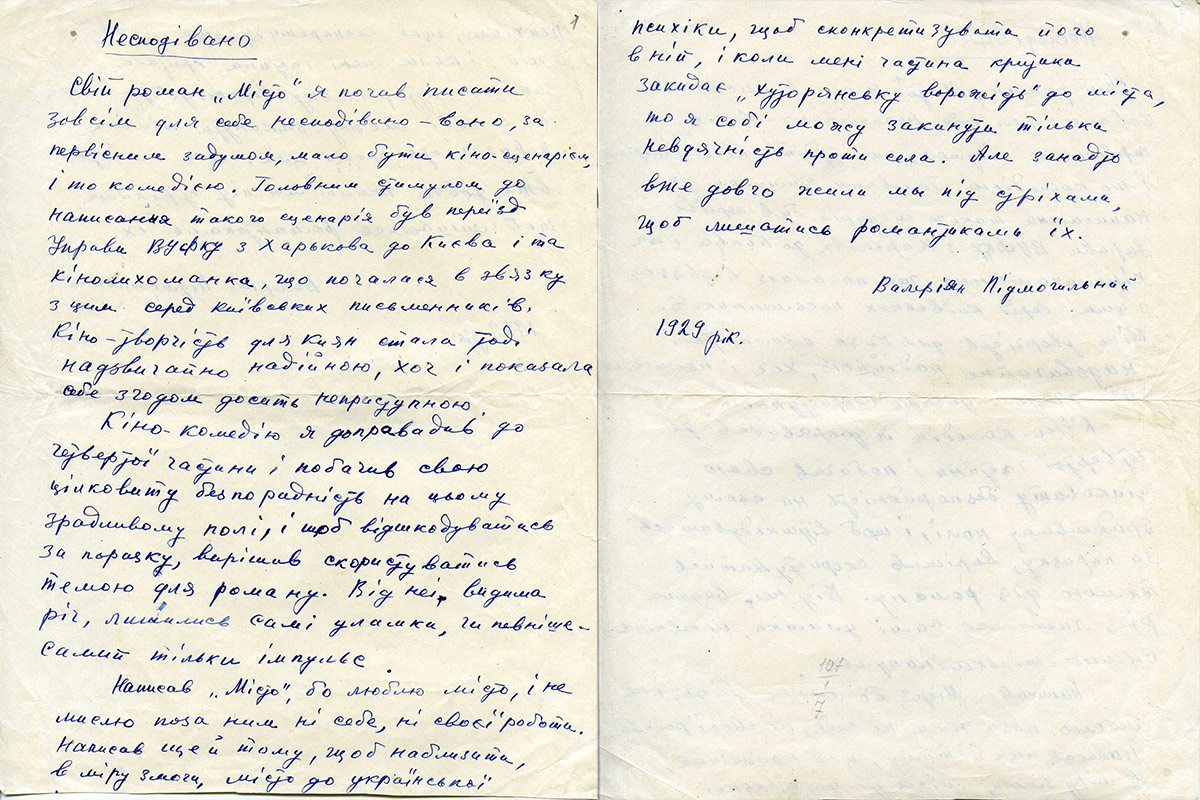
Author’s notes on writing The City (V. Pidmohylnyi, 1929)
The story’s main heroine, short-haired Marta, works as a statistician in Makhortrest (Soviet abbreviation for “Tobacco Trust”). She feels a weird disgust towards marriage and gets irritated by a desperately-for-love-friend Liova, who suggests she should fall in love with at least someone. Liova doesn’t give up and introduces her to his friend-biochemist Slavenko. Despite his first unpleasant impression of the girl, he falls in love with her: they talk about proteins, life, and a “new human.”
RELATED: The best Ukrainian literary classics available in English translations
Characters of “A Little Touch of Drama” are so obsessed with the creation of the New that, in the end, they realize that everything was already made and remade before them. Literary scholar Solomia Pavlychko calls Marta a victim of literature: the heroine reads books in her poor apartment that hauntingly repeat the same plots over and over again. Meanwhile, Pidmohylnyi expands her worries and love fever to the size of an ironic little drama.
Confrontations, Letters to Son, and Plutarch Readings on Solovky
After 1930, Pidmohylnyi’s last name did not appear on the cover of art periodicals or in bookshop windows. Instead, it appeared in interrogation protocols for Ukrainian writers. Valerian Pidmohylnyi was mentioned among other suspicious writers for some time, but only as a defender of the old worldview. It changed in December of 1934 when, during an apartment #57 search, NKVD found books and letters that later became a ground for his arrest.
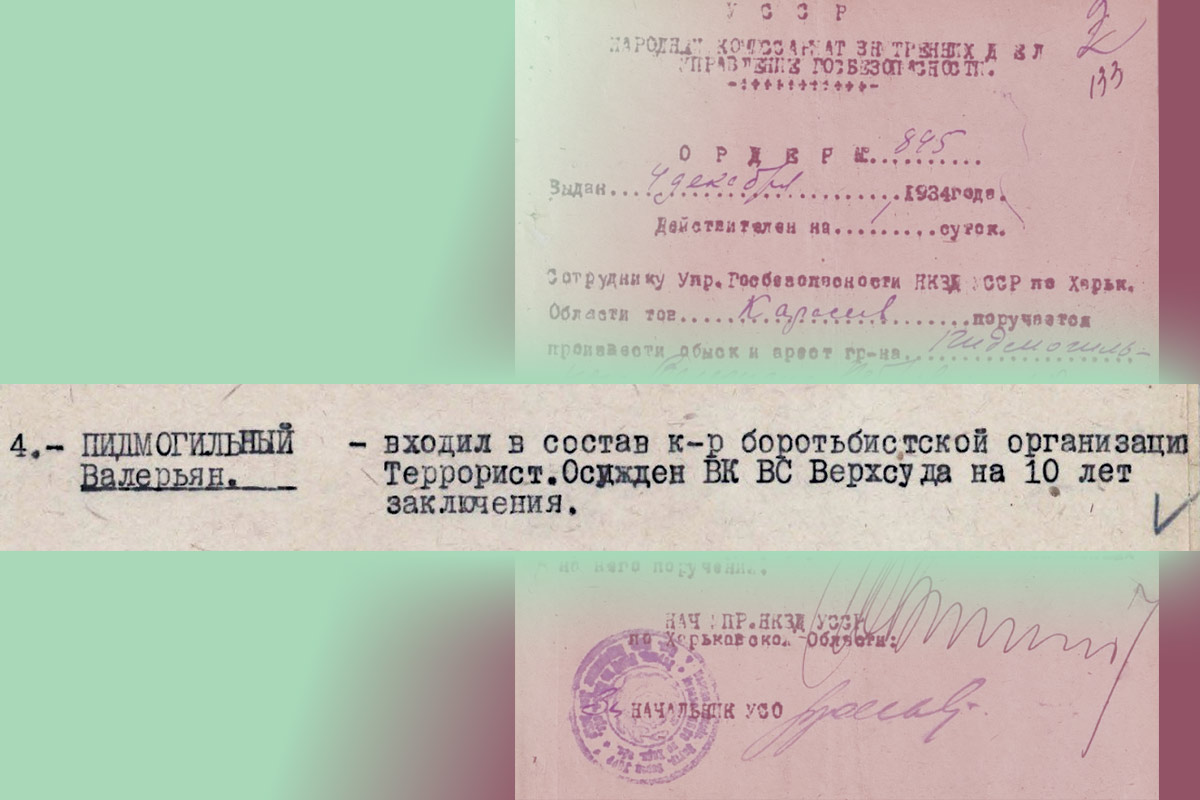
Arrest warrant
Valerian Pidmohylnyi was accused of affiliation with a counterrevolutionary organization that planned assassination attempts on the Сommunist Party leaders. The case was used against 17 other writers, including Hryhoriy Epik, who testified that Pidmohylnyi planned to personally kill one of the organizers of 1932-1933 Holodomor, Pavlo Postyshev. Epik and Pidmohylnyi testified against each other during an organized confrontation. Pidmohylnyi denied all the accusations made against him.
In January 1935, the writer eventually confessed to those accusations he had denied only a week prior. In the interrogation protocol, Pidmohylnyi points out that he was treated politely. Still, it is clear that, similar to other arrested writers, Pidmohylnyi was tortured and forced to confess. He was sentenced to 10 years in concentration camps. Despite the harsh living conditions, Pidmohylnyi reads Plutarch, remembering his childhood in the steppe, continues to work on translations, and writes letters to his wife. He asked her to put in order the draft of a second part of “Povist bez Nazvy” (“A Tale without a Name”) that he hadn’t had the chance to finish and publish.

A letter to his son Romasyk (Roman)
In 1956, the wife of Valerian Pidmohynlyi, Kateryna Chervinska, sent a request to the KGB to inform her whether her husband was still alive. The last letter from him was dated 1937. Kateryna received Valerian Pidmohylnyi’s death certificate with the date and reason of his death — liver cancer, 1941. In reality, the writer was executed in 1937 according to a repeated sentence of NKVD.
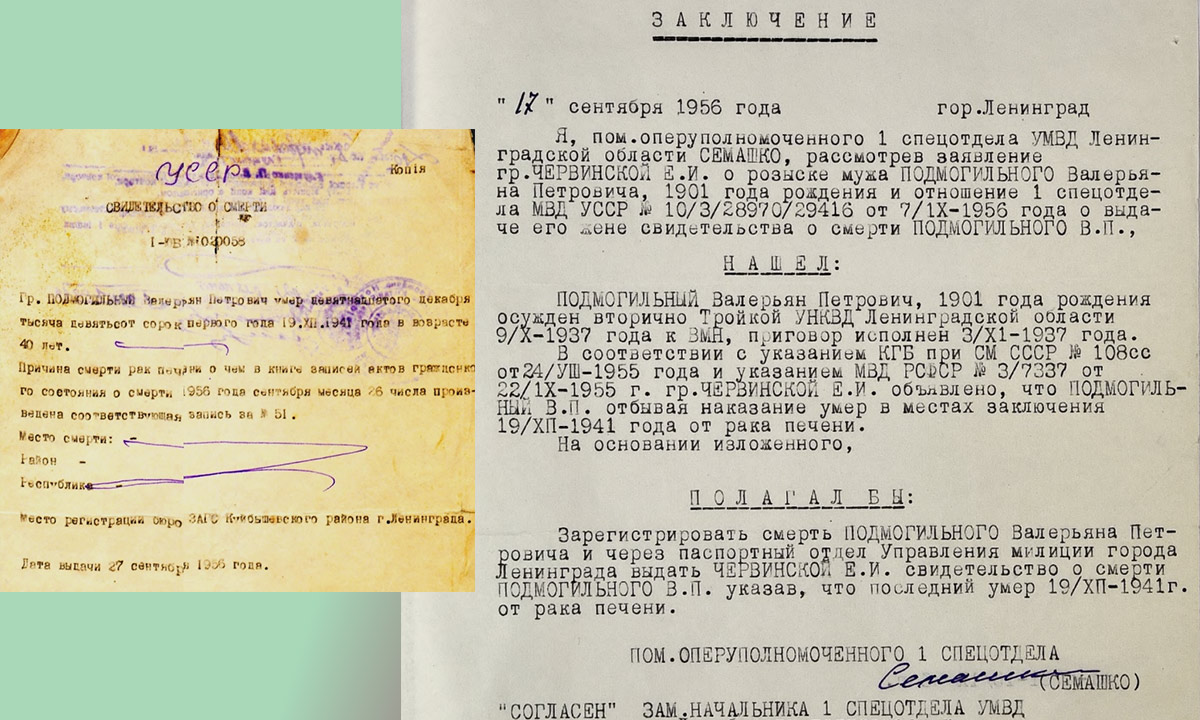
Death Certificate
Valerian Pidmohylnyi was rehabilitated in 1956. Until the 90s, mostly only literary scholars of the Ukrainian diaspora had discussed his work. However, the 21st-century novel “The City” has found its modern urban reader, eager to create a new literary canon where Pidmohylnyi now occupies a central place. His texts have been republished, researched, and discussed not only in academic circles but also in cultural projects, podcasts, standups, and even comedy shows.
Translation: Anastasiia Blazhko
Editing: John G Sennett, Sr; Terra Friedman King
This publication is sponsored by the Chytomo’s Patreon community
the more you read, the greater the possibilities

8760
Chytomo Picks
Ulas Samchuk – chronicler of Ukraine through wars, camps, famine, and exile
30.10.2024 - Petro Kraliuk
5736
Chytomo Picks
Vasyl Barka: Conservative modernist and Holodomor survivor
15.10.2024 - Mykhailo Sokulsky
